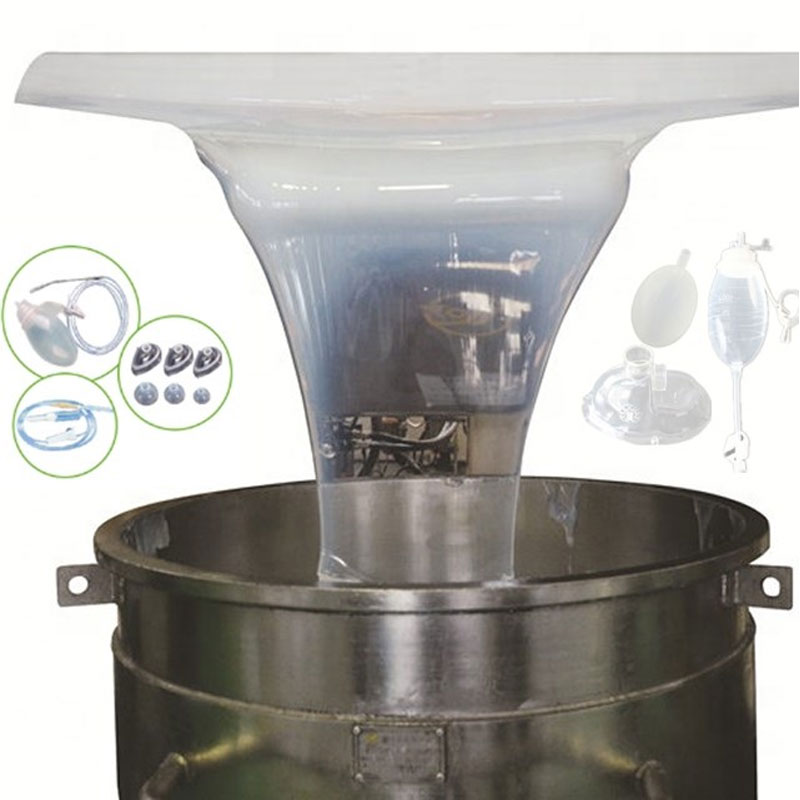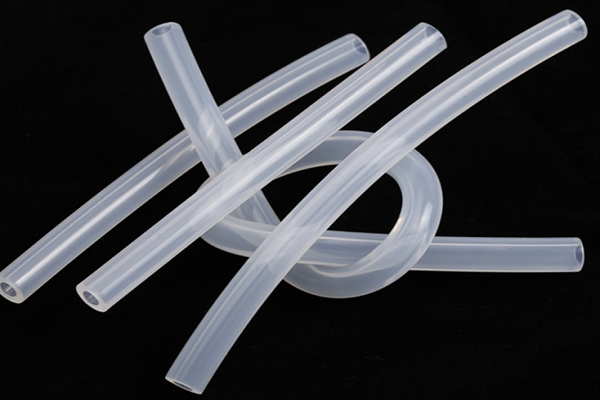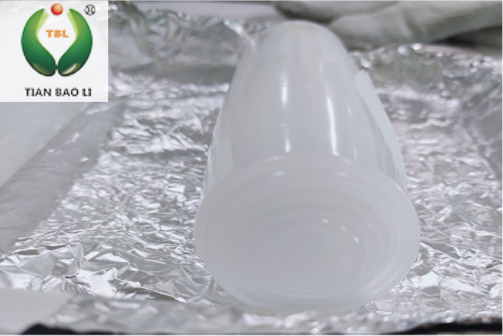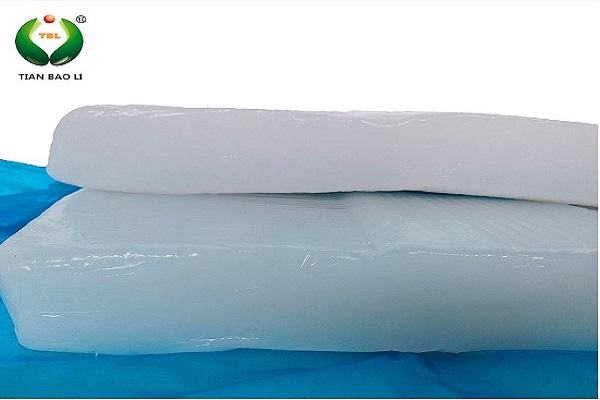
Liquid Silicone Rubber Applications In Medical Field
- By:TBL
- Date:2022/09/01
1.1 Introduction of Medical Silicone Rubber
Medical silicone rubber is a versatile material with many advantages, including superior biocompatibility, low tissue reaction when implanted, and chemical, thermal, and processing flexibility. Its versatility has been proven over many years in the manufacturing of medical devices. The physical properties of medical silicone rubber make it an ideal material for medical devices. It is flexible at a wide range of temperatures, resistant to compression set, and inert. TBL silicone rubber also has a long life, making it a popular material for medical products. Its properties also make it an excellent material for use in airways, balloon catheters, feeding tubing, and electrosurgical handpieces. Additionally, it is used in test chambers, infusion syringes, and wire/fluipath coextrusions.

1.2 Why Medical Grade Silicone Rubber Is widely Used ?
Medical devices place a high level of demand on materials, and failure can be immediate and costly. Due to the strict requirements for the materials used, there is a need to choose high-quality elastomers for medical products. It can be difficult to select the correct elastomer because of the numerous fabrication methods available, but medical grade silicone rubber has some distinct advantages. A good medical grade silicone has a high resistance to heat, cold, and chemical degradation.

Silicone rubber is a highly durable and versatile material that is a good choice for medical applications. Its high-quality properties are essential for medical products. The silicone rubber used in this industry is a two-component silicone that must be fully mixed and is a perfect candidate for manufacturing various kinds of medical applications. This type of elastomer is also a good choice for surgical sutures. This material is not only safe but is also biocompatible. TBL medical silicone rubber is highly stable and non-reactive. It is a popular material used in surgical equipment. The compound is used for medical devices and is biocompatible. It can be used in a wide variety of applications. The most common silicone rubber applications involve surgical masks, larynx masks, and airways. As with any other medical device, it can be contaminated. It is important to choose a material that is free of bacteria.
1.3 Liquid Silicone Rubber Applications In Medical Areas
Material properties are important in all applications, but in medical devices and appliances, where life and health are at risk, they are absolutely essential. A particular challenge in medical applications is that many components must be strong enough to withstand challenges such as heat, pressure, and chemical exposure, while being comfortable enough to allow physical contact with a patient. Few materials can meet this seemingly contradictory need, but liquid silicone rubber (LSR) can.
LSR is a flexible thermoset available in a variety of hardnesses and compositions to match the properties of the material to the application. Unlike thermoplastics, which are solid at room temperature and soften when heated or reheated, thermosetting resins start out in liquid form and are cured by heat to their final solid form. Once cured, they remain strong over a wide temperature range. This property alone makes them ideal for many medical applications as they are unaffected by high temperatures after curing and can be safely sterilized by heat or radiation. Additionally, they are immune to most chemical agents and can be chemically sterilized or used to safely transport a variety of liquids or gases.

Meanwhile, LSR is approved for medical applications in contact with the skin. that's we can see liquid silicone rubber for injection whose stability and hydrophobicity - water repellent - protect the hardened material from the skin. At the same time, unlike materials such as latex, LSR is non-allergenic, so the skin is not affected by plastics. It is hygienic and resistant to bacterial and fungal growth, the softness and flexibility of the material helps ensure patient comfort, while its waterproof properties prevent it from sticking to wounds. Materials are not without compromise. LSR can be significantly more expensive than other resins and has longer molding cycle times than thermoplastics. But it also makes it possible to combine several components, thus reducing production costs. In short, for the right medical application, the capabilities of LSR are unmatched.
1.4 Liquid Silicone Rubber Standards In Medical Areas
One of the major barriers facing medical products is contact with living tissue, whether external or internal with implantable devices. This is a two-way challenge: the product must not irritate or otherwise affect tissue, and the material itself must not be affected by tissue contact. Another requirement is sterilization. Whether for single use or repeated use, medical products must be sterile, which often requires exposure to high temperatures. Many thermoplastics, by their very nature, cannot withstand high temperatures.

Cleaning and disinfection may require the use of chemicals. So, depending on the application, the material may also have to withstand frequent and aggressive chemical exposure. Some applications may expose the material to UV rays, which may decompose or discolor the material, while other applications may expose the product to extreme cold, which may make the material brittle and susceptible to breakage. Finally, there are appearance considerations. A product or device may work perfectly, but if it looks old, worn or otherwise damaged, it may raise questions about its functionality.
For all these reasons, TianBaoLi LSR can be an ideal material for medical applications. Almost all medical grades LSR are biocompatible, and there are grades specifically developed and approved for use in implants and similar medical applications. LSR is very stable and can withstand high temperatures and exposure to cleaning and disinfecting chemicals. Its heat resistance also makes it suitable for heat-related therapeutic applications such as cauterization, where it can be used as a safety shield for cautery tools.
Unlike temperature extremes, the material is also suitable for applications that expose it to cold environments, such as cryoremoval of warts and similar procedures. Unlike other materials that are flexible at room temperature, LSR does not become brittle in cold weather. (Of course, LSR isn't the only flexible material available for medical applications. Thermoplastic elastomers, or TPEs, are less expensive and may be ideal for room temperature applications.)
Another reason our LSR components could be used on medical devices is purely cosmetic. Perceived quality is essential in the medical world, and anything that appears to be a defect can be interpreted as a real defect, even if it has no effect on function. For example, transparent parts that have yellowed due to UV exposure may continue to function very well, but the discoloration can be misinterpreted by patients and physicians. This is another area where LSR excels and is virtually immune to environmental factors. It is also highly scratch resistant, so in addition to resisting abrasion and maintaining function, LSR remains aesthetically pleasing throughout its life.
Every product places demands on materials, but demands in the medical industry can be particularly stringent. When medical products and devices don’t perform as they should, the consequences can be serious, immediate, and costly. The strict regulations on medical products can help prevent those problems, but they also pose a set of development challenges in getting a product to market. In a growing number of instances, the material to help answer these challenges — in terms of both performance and meeting regulatory requirements — is thermosetting liquid silicone rubber (LSR). One of the major obstacles facing medical products is contact with living tissue, either externally (skin contact) or internally (e.g., with implantable devices). It’s a two-way challenge: The product must not irritate or otherwise affect the tissue, and the material itself cannot be adversely affected by contact with that tissue.
Another requirement is sterilization. Whether designed for one-time or repeated use, medical products must be sterile, which typically entails exposure to high heat. Many thermoplastics by their very nature cannot stand up to heat. Cleaning and disinfection can require the use of chemicals, so depending on the application, the material may also have to withstand often-harsh chemical exposure. Some applications may expose a material to UV radiation, which can break down or discolor materials, while others can expose a product to extreme cold that can make materials brittle and subject to breakage. Finally there are cosmetic considerations. A product or device may perform flawlessly, but if it appears old, worn, or otherwise compromised, it can raise questions regarding its functionality.
For all these reasons, LSR can be an ideal material for medical applications. Nearly every grade of LSR is biocompatible, and the material is available in grades specifically developed and approved for implants* and similar medical applications. LSR is extremely stable and can withstand high levels of heat and exposure to cleaning and disinfecting chemicals. Its heat resistance also makes it suitable for heat-related treatment applications such as cauterization, in which it can be used as safety shields on cauterizing tools. On the opposite side of extreme temperature, the material is also suitable for applications that expose it to cold — freezing for removal of warts and similar procedures, for instance. Unlike other materials that are flexible at room temperature, LSR will not become brittle under cold conditions. (Of course, LSR is not the only flexible material available for medical applications. Thermoplastics elastomers, or TPEs, are less expensive and may be perfectly suitable for room temperature applications.)
Another reason to potentially use LSR components on medical devices is purely cosmetic. In the medical world, perceived quality can be critical, and anything that appears to be a flaw may be interpreted as an actual defect, even if it has no impact on function. For example, a transparent part that yellows due to UV exposure may continue to perform perfectly fine, but the discoloration may be misinterpreted by patients and doctors alike. This is another area in which LSR excels, remaining virtually unaffected by environmental factors. It is also highly scratch resistant, so in addition to resisting wear and retaining its functionality, LSR remains cosmetically attractive throughout its life.
In addition to meeting the stringent demands of medical applications, LSR has several unique and useful characteristics:
- In its liquid form, and before being solidified by heat in the mold, LSR has very low viscosity. This allows it to fill very small features and thin walls without risk of voids or porosity. Of course, low viscosity can lead to flash due to leakage where mold halves meet, but this can be minimized with careful mold design.
- Transparent, optical LSR is a newer material available to developers. It’s ideal for applications like light covers, lenses, and light pipes. Its light transmission exceeds that of other plastics and is second only to glass; its stability prevents damage due to heat from light sources; and because of its flexibility, light pipes can be molded straight and then bent for assembly, simplifying manufacturing.
- Due to its flexibility, LSR can be molded in shapes that would otherwise be trapped in molds. LSR parts with undercuts, no draft, or even negative draft can be manually peeled out of molds without damage. This can eliminate the need for costly side-action cams and provides great flexibility for the designer. Multiple parts — a lens, protective cover, and waterproof seal, for example — could be combined into one part, simplifying the bill of materials and reducing both molding and assembly costs.
- LSR is available in multiple durometers (degrees of hardness), allowing the designer to match the material to the function of the part. A soft, relatively tacky LSR might be used as feet or a base for a device to keep it from sliding when in use. That same tackiness might make the surface of a device hard to clean if stored in a dusty environment. A material between those two in hardness might be the ideal choice for a gasket designed to seal liquid in or moisture out. Of course, when multiple functions are combined in a single part, the designer will have to consider whether a single material can support all the necessary functions (but that is what prototyping is for).
- Since LSR cannot be machined, creation of functional LSR prototypes requires molding. Traditional molding has not been affordable at low volumes, but automated generation of toolpaths for milling aluminum molds (by providers like Proto Labs) has greatly reduced that cost. LSR molding can now be affordable at volumes as low as 25 pieces for prototyping, low-volume production, or bridge tooling.
- LSR is also ideal for overmolding, in which a molded or assembled part is inserted into another mold, which is then injected with LSR to create a second layer of material over the first. Overmolding works extremely well for devices with handles, for example, that need to be biocompatible, heat- and chemical-resistant, and just plain comfortable to grip.
1.5 Conclusion
Every product has hardware requirements, but the medical industry can have particularly stringent requirements. When medical products and devices do not work properly, the consequences can be serious, immediate and costly. Strict regulations for medical products help prevent these problems, but they also present a range of development challenges to bring products to market. Increasingly, the material to meet these challenges, in terms of performance and meeting regulatory requirements, TBL produces this medical grade silicone with strict standards which given by government, welcome contact us in case of your demands of our silicone rubber products.
CONTACT US

Foshan Tian Bao Li Silicon Engineering Technology Co., Ltd.
We are always providing our customers with reliable products and considerate services.
If you would like to keep touch with us directly, please go to contact us



